
On the Origin of Species, published on 24 November 1859, is a work of scientific literature by Charles Darwin that is considered to be the foundation of evolutionary biology. Darwin's book introduced the scientific theory that populations evolve over the course of generations through a process of natural selection. The book presented a body of evidence that the diversity of life arose by common descent through a branching pattern of evolution. Darwin included evidence that he had collected on the Beagle expedition in the 1830s and his subsequent findings from research, correspondence, and experimentation.

Lynn Margulis was an American evolutionary biologist, and was the primary modern proponent for the significance of symbiosis in evolution. Historian Jan Sapp has said that "Lynn Margulis's name is as synonymous with symbiosis as Charles Darwin's is with evolution." In particular, Margulis transformed and fundamentally framed current understanding of the evolution of cells with nuclei – an event Ernst Mayr called "perhaps the most important and dramatic event in the history of life" – by proposing it to have been the result of symbiotic mergers of bacteria. Margulis was also the co-developer of the Gaia hypothesis with the British chemist James Lovelock, proposing that the Earth functions as a single self-regulating system, and was the principal defender and promulgator of the five kingdom classification of Robert Whittaker.

The Gaia hypothesis, also known as the Gaia theory, Gaia paradigm, or the Gaia principle, proposes that living organisms interact with their inorganic surroundings on Earth to form a synergistic and self-regulating, complex system that helps to maintain and perpetuate the conditions for life on the planet.
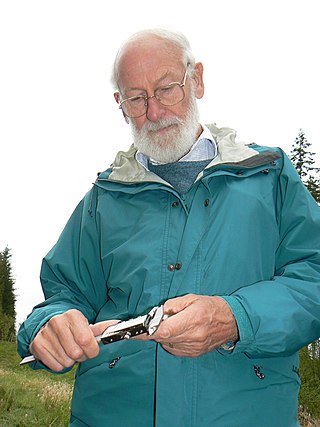
Peter Raymond Grant and Barbara Rosemary Grant are a British married couple who are evolutionary biologists at Princeton University. Each currently holds the position of emeritus professor. They are known for their work with Darwin's finches on Daphne Major, one of the Galápagos Islands. Since 1973, the Grants have spent six months of every year capturing, tagging, and taking blood samples from finches on the island. They have worked to show that natural selection can be seen within a single lifetime, or even within a couple of years. Charles Darwin originally thought that natural selection was a long, drawn out process but the Grants have shown that these changes in populations can happen very quickly.
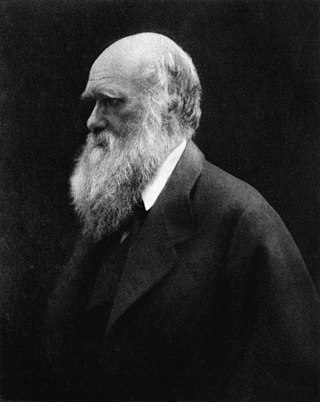
This is a list of topics in evolutionary biology.
Dorion Sagan is an American essayist, fiction writer, poet, and theorist of ecology. He has written and co-authored books on culture, art, literature, evolution, and the history and philosophy of science, including Cosmic Apprentice,Cracking the Aging Code, and Lynn Margulis: The Life and Legacy of a Scientific Rebel. His book Into the Cool, co-authored with Eric D. Schneider, is about the relationship between non-equilibrium thermodynamics and life. His works have been translated into 15 languages and are widely cited in critical theory since the "nonhuman turn," in new materialist theory, and in feminist science studies.
An undergraduate degree is a colloquial term for an academic degree earned by a person who has completed undergraduate courses. In the United States, it is usually offered at an institution of higher education, such as a college or university. The most common type of these undergraduate degrees are associate degree and bachelor's degree. Bachelor's degree typically takes at least three or four years to complete. In some other educational systems, undergraduate education is post-secondary education up to the level of a master's degree; this is the case for some science courses in Britain and some long-cycle medicine courses in Europe. These degrees can be categorised as basic or first professional degrees.

Universidad San Francisco de Quito USFQ is a liberal-arts, private university located in Quito, Ecuador. It was the first totally private self-financed university in Ecuador and the first liberal-arts institution in the Andean region.

Darwin and His Great Discovery is a science book for young adults by L. Sprague de Camp and Catherine Crook de Camp, first published by Macmillan in 1972.

The Galápagos tortoise or Galápagos giant tortoise is a species of very large tortoise in the genus Chelonoidis. The species comprises 15 subspecies. It is the largest living species of tortoise, with some modern Galápagos tortoises weighing up to 417 kg (919 lb). With lifespans in the wild of over 100 years, it is one of the longest-lived vertebrates. Captive Galapagos tortoises can live up to 177 years. For example, a captive individual, Harriet, lived for at least 175 years. Spanish explorers, who discovered the islands in the 16th century, named them after the Spanish galápago, meaning "tortoise".
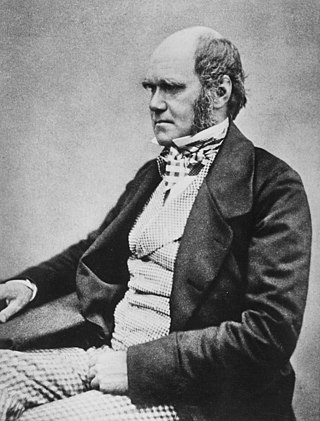
Charles Robert Darwin was an English naturalist, geologist, and biologist, widely known for his contributions to evolutionary biology. His proposition that all species of life have descended from a common ancestor is now generally accepted and considered a fundamental concept in science. In a joint publication with Alfred Russel Wallace, he introduced his scientific theory that this branching pattern of evolution resulted from a process he called natural selection, in which the struggle for existence has a similar effect to the artificial selection involved in selective breeding. Darwin has been described as one of the most influential figures in human history and was honoured by burial in Westminster Abbey.

Eugenia María del Pino Veintimilla is a developmental biologist at the Pontificia Universidad Catolica del Ecuador in Quito. She was the first Ecuadorian citizen to be elected to the United States National Academy of Sciences (2006). She was awarded the 2019 Prize of the Latin American Society for Developmental Biology for her strong contributions to research in Ecuador, and in general to promoting Developmental Biology in Latin America.
The Ecuadorian Constitution requires that all children attend school until they achieve a “basic level of education,” which is estimated at nine school years.

Evolutionary thought, the recognition that species change over time and the perceived understanding of how such processes work, has roots in antiquity—in the ideas of the ancient Greeks, Romans, Chinese, Church Fathers as well as in medieval Islamic science. With the beginnings of modern biological taxonomy in the late 17th century, two opposed ideas influenced Western biological thinking: essentialism, the belief that every species has essential characteristics that are unalterable, a concept which had developed from medieval Aristotelian metaphysics, and that fit well with natural theology; and the development of the new anti-Aristotelian approach to modern science: as the Enlightenment progressed, evolutionary cosmology and the mechanical philosophy spread from the physical sciences to natural history. Naturalists began to focus on the variability of species; the emergence of palaeontology with the concept of extinction further undermined static views of nature. In the early 19th century prior to Darwinism, Jean-Baptiste Lamarck (1744–1829) proposed his theory of the transmutation of species, the first fully formed theory of evolution.
Howard L. Snell is an American ecologist and professor at the University of New Mexico. His research and conservation efforts have focused on the Galapagos land iguanas, which were in danger of extinction.
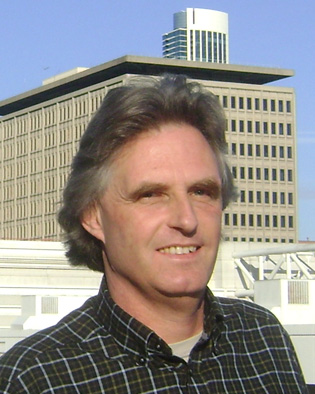
Ulrich Kutschera is a former German professor of biology who works as an academic advisor at I-Cultiver, Inc. in San Francisco and as a visiting scientist in Stanford/Palo Alto, California, US. He is the founder and head of "AK Evolutionbiologie", an association of evolutionary biologists in Germany. Starting in the 2000s, Kutschera started engaging with the public, first as a critic of creationism and intelligent design. Since the mid-2010s, his public statements and popular books focused on climate skepticism and criticism of gender studies.

The following outline is provided as an overview of and topical guide to evolution:
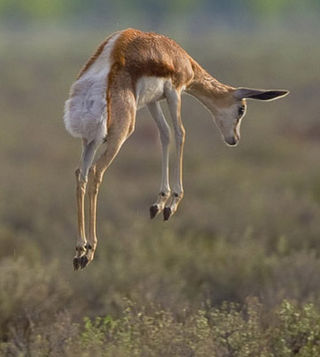
Teleology in biology is the use of the language of goal-directedness in accounts of evolutionary adaptation, which some biologists and philosophers of science find problematic. The term teleonomy has also been proposed. Before Darwin, organisms were seen as existing because God had designed and created them; their features such as eyes were taken by natural theology to have been made to enable them to carry out their functions, such as seeing. Evolutionary biologists often use similar teleological formulations that invoke purpose, but these imply natural selection rather than actual goals, whether conscious or not. Biologists and religious thinkers held that evolution itself was somehow goal-directed (orthogenesis), and in vitalist versions, driven by a purposeful life force. With evolution working by natural selection acting on inherited variation, the use of teleology in biology has attracted criticism, and attempts have been made to teach students to avoid teleological language.
Juan Manuel Guayasamin is an Ecuadorian biologist. He earned his Ph.D. in 2007 from University of Kansas, Department of Ecology and Evolutionary Biology and as of 2017 he is working as professor at Universidad San Francisco de Quito in Ecuador. His research interests include the evolution of glass frogs (Centrolenidae) and direct-developing anurans. His main contributions have been: phylogenetic taxonomy of glassfrogs, description of the variation of skin texture in frogs, description of numerous species of amphibians and reptiles, and a monographic review of all Ecuadorian glassfrogs. A team led by Juan M. Guayasamin discovered Hyalinobatrachium yaku in May 2017, a glassfrog with transparent venter. To date (2020), he has described a total of 6 amphibian genera, 55 species of amphibians, and 11 reptiles, including two geckos from the Galápagos Islands.
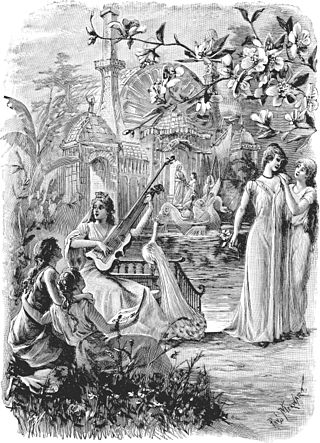
Evolution has been an important theme in fiction, including speculative evolution in science fiction, since the late 19th century, though it began before Charles Darwin's time, and reflects progressionist and Lamarckist views as well as Darwin's. Darwinian evolution is pervasive in literature, whether taken optimistically in terms of how humanity may evolve towards perfection, or pessimistically in terms of the dire consequences of the interaction of human nature and the struggle for survival. Other themes include the replacement of humanity, either by other species or by intelligent machines.


















